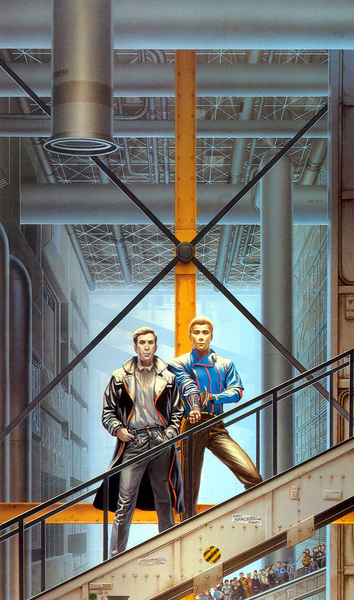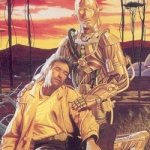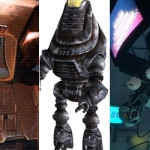
In the stories of I, Robot, Asimov created a history of robotics and the positronic brain in the not-so-distant future. His next robot story, The Caves of Steel, appeared three years after his first collection, in 1953, first as a magazine serial and subsequently in novel form. The Caves of Steel is at its heart a murder mystery which takes places thousands of years after the events of the stories in I, Robot. The protagonist is New York Police Detective Elijah Baley, known to his friends as Lije, who is assigned to solve a seemingly impossible crime whose results could have a significant impact on the citizens of New York and all Earthmen. To help him in his investigation, Lije is assigned a partner, R. Daneel Olivaw, but there is a slight problem — the “R” in Olivaw’s name stands for “Robot.”
One of the main themes throughout I, Robot was the prejudice of humans towards robots, to the point where in the 21st century world of those stories, robots were not allowed on Earth. Not much has changed tens of centuries later. Some robots are essential, like those who work on farms outside of the enormous domed city complexes where virtually all people on Earth live, because Earthmen have lived indoors so long that they fear being outside. Inside the city, they are just beginning to be assigned some of the less-complex tasks, like shoe store clerk or office messenger, to the great dismay of most people — these robots are taking away jobs once held by humans, and in the city society, being dispossessed means losing all social status and the privileges of civil service rank that make the otherwise communal and crowded life bearable. They fear the robots, even though they know that the Laws of Robotics so deeply ingrained into the electronic pathways of the positronic brain mean that robots must obey humans and above all can never cause or allow harm to humans.
Prejudice abounds among Earthmen, it seems. Not only do they hate robots, they also hate the standoffish Spacers who have barricaded themselves into their own community near New York, and what’s more, the Spacers actually embrace the use of robots as a tool to aid humans. The Spacers, humans from the fifty worlds originally colonized by Earthmen long ages ago, have their own problems, though — one of them has been murdered, but it seems like an impossible situation. Blasters must be locked away before entering Spacetown, yet someone used one to murder Dr. Sarton. Someone could leave New York via a side exit into the open air, walk across open fields, and enter Spacetown through similar entrances away from the barricade, but the idea that an Earthman would actually leave the safety and security of the enclosed dome and expose himself to open air and sunlight is absolutely unthinkable. Someone did it, though, and Lije Baley must figure out who, with the help of the Spacer robot Daneel Olivaw, who is practically indistinguishable from a human and can travel around the city without raising suspicion (as well as report back to his Spacer superiors).
Of course, Lije and Daneel figure out whodunnit, and they prevent armed conflict between Spacers and Earthmen while they’re at it, but much more interesting as they go through the process is what Lije learns about the Spacers, about his own City society, and ultimately about himself. The novel presents an interesting examination of how societies go about solving their problems, and what lengths they must sometimes go to. The City society has bred respect for authority as a necessary trait for so many people living in such close quarters, but what happens when respect pushes out divergent thinking? Robots certainly provide for higher efficiency, but at what cost? Mob mentalities, subversive fringe groups, and the “medieval” ideas of self-reliance and going “back to the earth” are other ideas that are explored, and can just as easily lead a reader to pick out the parallel situations in our own society. This meat for discussion is what makes me a more thoughtful and enlightened reader, and it’s why I still absolutely love to read Asimov.







Glam pic of the lovely pair! My current hearthrobbs (along with Giskard too) especially Daneel. I’d HATE to live in the Caves of Steel though. They smelt (as Lije will testify). And I’m claustrophobic.
I wouldn’t want to live there either – I hate the idea that at some point in the far distant future there won’t be people who love and appreciate nature and being outside.
Exactly! I couldn’t live without greenery, scenery, sunshine and good fresh air!
I like to fantasize that perhaps Daneel (and/or Giskard) would deduce that going out into this would be beneficial to Elijah’s health and wellbeing in the longterm. And so the robots would’ve ‘saved a human from harm’.
Wishful thinking: maybe it’s I who would love to be ‘saved’ by Giskard and Daneel….!